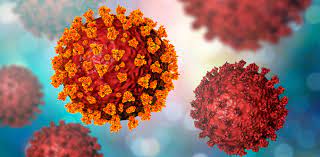August 30, 2024 — A recent analysis predicts a dramatic increase in cancer cases and deaths among men globally by 2050, with significant disparities based on age, region, and socioeconomic status. According to the study, cancer cases in men are expected to rise by 84%, reaching 19 million annually by 2050, while cancer-related deaths are projected to increase by more than 93%, totaling 10.5 million each year.
The study, led by Dr. Habtamu Mellie Bizuayehu from The University of Queensland’s School of Public Health, utilized data from the 2022 Global Cancer Observatory (GLOBOCAN) to analyze cancer incidence, mortality, and prevalence among men worldwide. The researchers stratified their findings by factors including age, region, and the Human Development Index (HDI), a composite measure of health, education, and standard of living.
Key Findings:
- Current Burden (2022): The analysis reported approximately 10.3 million new cancer cases and 5.4 million cancer-related deaths among men in 2022. Nearly two-thirds of these cases and deaths occurred in men aged 65 years or older.
- Future Projections (2050): By 2050, the number of cancer cases is expected to rise by 84.3%, while cancer deaths are projected to increase by 93.2%. The most significant increases are anticipated among older men and in countries with low to medium HDI scores.
- Regional Disparities: The mortality-to-incidence ratio (MIR), which indicates survival outcomes, was found to vary significantly by region. In 2022, Africa had the highest MIR at 72.6%, while the Americas had the lowest at 39.1%. Countries with lower HDI scores had higher MIRs, reflecting poorer survival outcomes compared to those with higher HDI scores.
- Cancer Types: Lung cancer was the leading cause of cancer cases and deaths among men in 2022, and it is expected to remain the leading cause in 2050. Other cancer types also showed variations in MIRs, with thyroid cancer having the lowest MIR (7.6%) and pancreatic cancer the highest (90.9%).
Contributing Factors:
The higher cancer incidence and mortality rates among men can be largely attributed to modifiable risk factors, such as smoking, alcohol consumption, and exposure to occupational carcinogens. Additionally, the underutilization of cancer prevention, screening, and treatment services further exacerbates the burden.
Call to Action:
The study highlights the urgent need for global efforts to address these disparities and promote equity in cancer prevention and care. “Disparities in cancer incidence and mortality among men were observed across age groups, countries/territories, and HDI in 2022, with these disparities projected to widen further by 2050,” the authors noted. They called for increased attention to reducing these disparities and ensuring that all men, regardless of where they live, have access to effective cancer care.
Limitations and Considerations:
While the findings provide a crucial overview of the global cancer burden among men, the study’s authors caution that the results may be influenced by the quality of the GLOBOCAN data. Additionally, the study did not include other measures of cancer burden, such as years of life lost or years lived with disability, due to data limitations.
Despite these limitations, the study underscores the growing global challenge posed by cancer among men and the need for coordinated international efforts to address this issue.
The full study is published online in the journal Cancer. The authors did not disclose any funding information and reported no conflicts of interest.












